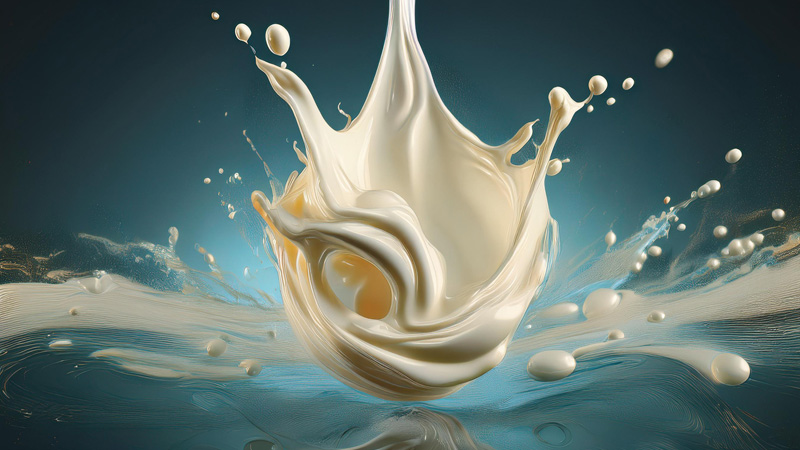Lipids, or fats, are substances that are insoluble in water and soluble in non-polar organic solvents. They perform various functions, one of the most important being that they are an excellent source of energy (calorie intake greater than 9 kcal/g), for this reason they are very common in both the plant and animal worlds.
Fat is the most variable component of milk as it depends on the stage of lactation of the animal, its diet, its breed, and individual and non-individual characteristics; for example, in cow’s milk the quantity can vary from 3 to 4.6% depending on the season.
In milk, lipids are found in emulsion in the form of spherical globules with a diameter ranging from 0.1 to 10 µm, and are synthesized by the secretory cells of the mammary gland epithelium. However, milk fats do not have a homogeneous structure, but a concentric lamellar structure, due to the superposition of layers of triglycerides: the high-melting ones are arranged externally in the globule, the low-melting ones internally. This stratification arises from the fractional crystallization of the fat during cooling.
The application of hydrodynamic cavitation has shown promising results in the modification of milk fat and milk fat globules.
Cavitation treatments on skimmed milk samples reduce the size of fat globules to about 10 nm.
A substantial reduction (up to 81.5%) of fat globule size occurs for samples treated in combination with heat, which showed a better particle distribution compared to cold cavitation.
Effective homogenization of milk fat particle size down to nanometer size and uniform dispersion has been demonstrated using hydrodynamic cavitation treatment, producing a superior homogenization effect compared to conventional methods.
Improved homogenization highlights the potential of cavitation treatment to improve milk fat fractionation in the dairy system and achieve separation of larger fat globules from smaller ones.
Although significant progress has been made in homogenizing milk fat globules using hydrodynamic cavitation, these technologies are still waiting to reach their full potential for use in industrial applications.
Hydrodynamic cavitation has the potential to be used in continuous milk processing plants.











